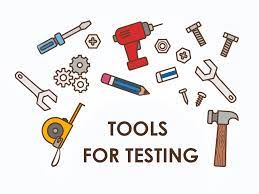Here’s more information about the scalability requirements for each of the tools mentioned:
- Selenium: Selenium itself doesn’t impose specific scalability requirements. However, the scalability of your Selenium tests depends on how you set up your test environment. You can use Selenium Grid to distribute test execution across multiple machines and browsers, allowing you to scale your tests horizontally. By configuring and managing a Selenium Grid infrastructure, you can handle a larger number of test cases and achieve parallel test execution across different environments.
- Postman: Postman is primarily used for API testing and doesn’t have inherent scalability limitations. However, the scalability of your tests might depend on the backend systems or APIs you are testing. If the backend systems can handle a large number of concurrent requests, you can scale your Postman tests accordingly. Additionally, you can leverage Postman’s collection runner or Newman (command-line tool) to execute collections in parallel, further enhancing scalability.
- TestComplete: TestComplete is a commercial functional testing tool that can scale based on your licensing and infrastructure setup. It supports distributed testing by utilizing TestExecute, which allows you to execute tests on multiple machines simultaneously. By setting up a distributed testing environment and leveraging TestExecute licenses, you can achieve scalability in executing your TestComplete tests across different machines and configurations.
- Katalon Studio: Katalon Studio provides scalability options depending on your licensing and test execution environment. With a free version, the scalability might be limited to a single machine. However, if you opt for the enterprise version, you can utilize Katalon Studio’s integration with cloud-based services like Sauce Labs or BrowserStack to perform parallel test execution on multiple virtual machines and browsers, thus achieving scalability.
- Robot Framework: Robot Framework itself doesn’t impose specific scalability limitations. The scalability of your Robot Framework tests depends on how you set up your test environment and the libraries you use. With appropriate configuration and tool choices (e.g., SeleniumLibrary for parallel browser testing), you can scale your Robot Framework tests horizontally across multiple machines and browsers.
It’s important to note that the scalability of these tools is also influenced by other factors such as the hardware resources, network infrastructure, and the efficiency of your test scripts. Additionally, integrating these tools with appropriate test management systems, CI/CD pipelines, and cloud-based services can further enhance their scalability capabilities.
SHARE
